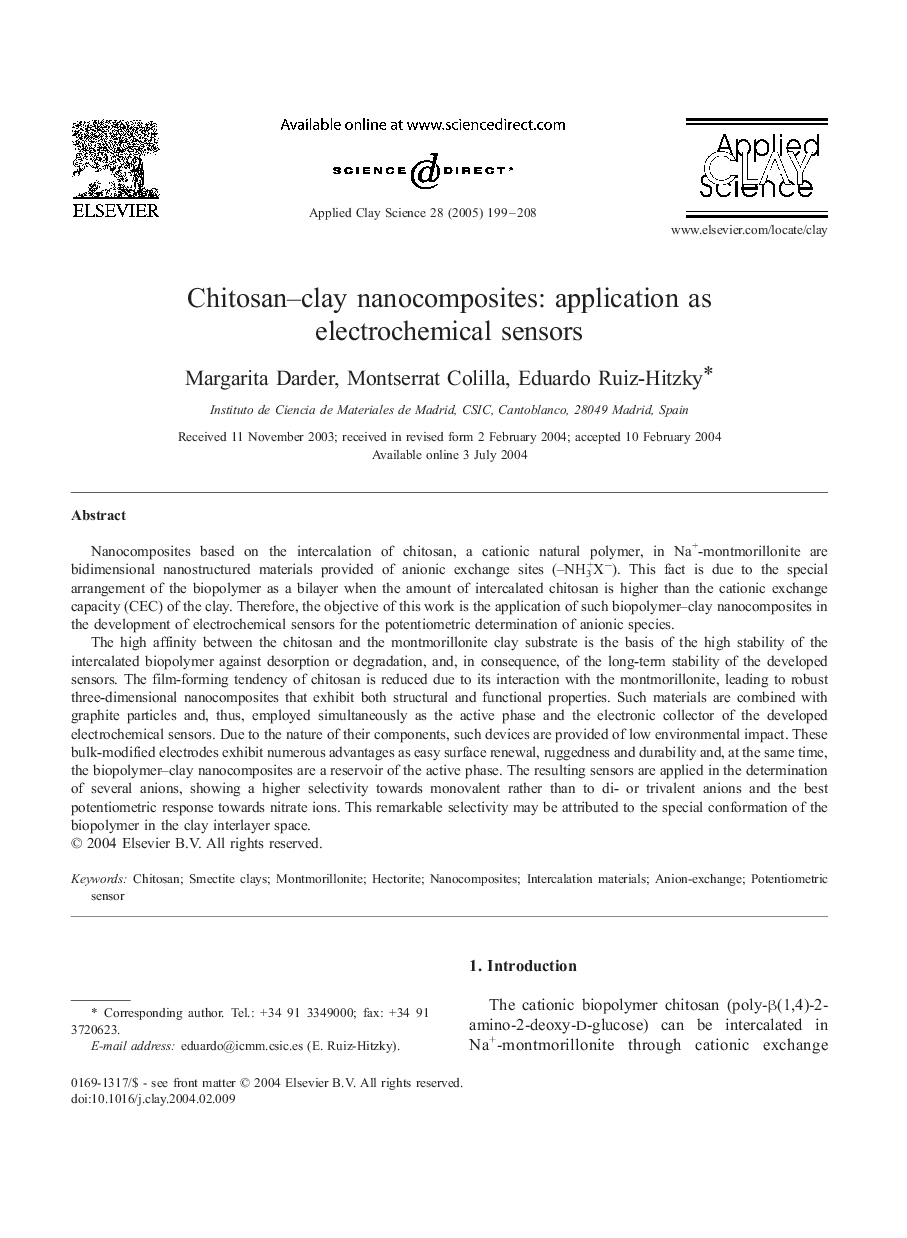| Article ID | Journal | Published Year | Pages | File Type |
|---|---|---|---|---|
| 9822549 | Applied Clay Science | 2005 | 10 Pages |
Abstract
The high affinity between the chitosan and the montmorillonite clay substrate is the basis of the high stability of the intercalated biopolymer against desorption or degradation, and, in consequence, of the long-term stability of the developed sensors. The film-forming tendency of chitosan is reduced due to its interaction with the montmorillonite, leading to robust three-dimensional nanocomposites that exhibit both structural and functional properties. Such materials are combined with graphite particles and, thus, employed simultaneously as the active phase and the electronic collector of the developed electrochemical sensors. Due to the nature of their components, such devices are provided of low environmental impact. These bulk-modified electrodes exhibit numerous advantages as easy surface renewal, ruggedness and durability and, at the same time, the biopolymer-clay nanocomposites are a reservoir of the active phase. The resulting sensors are applied in the determination of several anions, showing a higher selectivity towards monovalent rather than to di- or trivalent anions and the best potentiometric response towards nitrate ions. This remarkable selectivity may be attributed to the special conformation of the biopolymer in the clay interlayer space.
Keywords
Related Topics
Physical Sciences and Engineering
Earth and Planetary Sciences
Geochemistry and Petrology
Authors
Margarita Darder, Montserrat Colilla, Eduardo Ruiz-Hitzky,
